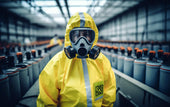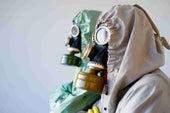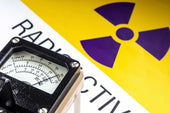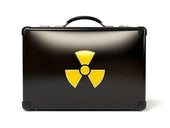America has put the pandemic squarely in the rearview mirror and declared the threat is over after more than a million lives were lost and $14 trillion in taxpayer money was spent on the COVID response.
The COVID-19 pandemic has caused much human suffering, but it has also spurred significant scientific and technological advancements, including the speedy creation of vaccines and the widespread use of telemedicine.
Additionally, we know that healthcare can and must be better prepared for future threats to modern medicine and the next pandemic. But how can the government and healthcare system be better prepared for the upcoming pandemic?
How do you prepare for the next pandemic?
"Prepare for the next pandemic" is a terrifying phrase. As we have witnessed over the past three years, it comes without warning. Nevertheless, we must make every effort to prevent the next pandemic.
Pandemics are significantly less expensive to prevent than to control. We need long-term political and financial support, continuous financial support and commitment, and good health sector governance.
The effectiveness of any country's efforts to protect and prepare for the next pandemic depends on how well-developed national systems are for identifying and combating outbreaks.
At the same time, governments must collaborate better to guarantee a fair distribution of the instruments needed for readiness and reaction.

Below are strategies to help the world prepare for a global response and prevent the next infectious disease outbreak or epidemic from becoming a pandemic.
1. Sufficient funding for public health.
To end the "panic and neglect" cycle, governments must prioritize real, long-term investments in robust health systems for all populations. In most countries, pandemic prevention, preparedness, and response are severely underfunded, compartmentalized, and inadequately integrated into service delivery systems.
According to joint World Bank-World Health Organization studies, low—and middle-income countries have the highest capacity shortages. These studies estimate the yearly financial demand for pandemic preventive preparedness and response at $30 billion.
The majority of these funds will have to come from domestic sources. However, the World Bank's analysis also reveals that the predicted rise in government health spending in 2026 would only cover approximately 60% of the yearly expenditure required to maintain and expand public health preparation and response capacities in low—and lower-middle-income countries.
Given the nature of this reality, major international funding will be required to protect and assist developing nations.
2. Sound governance in the health sector.
Effective health sector governance is essential for pandemic planning, prevention, and response success. Countries must mobilize local, state, and federal governments through flexible, risk-informed planning and budgeting systems and evidence-based decision-making processes.
They require effective public health organizations and high-quality legislative and regulatory frameworks.
A One Health strategy that unites the human, animal, and environmental sectors for treatments that ultimately save lives requires this form of strong governance more than any other.
3. Add manufacturing capacity.
The science of advancing vaccines and treatments is crucial, but the science of manufacturing and distributing vaccines is also to be considered.
More manufacturing capacity is required for all pandemic-related products, including ventilators and personal protective equipment. This can quickly increase the production of treatments and vaccinations when required—not just for the United States but the entire globe.
The supply chains were one of the things that fell short. Dependence on foreign nations for supply is acceptable when a calamity only affects one area.
However, getting the supplies from high-income countries to the right places becomes extremely difficult if the entire planet is at stake. And what you may observe in the US in the future is the repatriation of supply chains, which is likely beneficial for us.
4. Invest in a testing capacity.
Because we "missed the boat" on recognizing how swiftly the new coronavirus is spreading in American populations, the need to invest in testing capability should also be prioritized.
Every time a danger of this nature arises, there needs to be an instant reaction to building that capacity and getting it out to as many cities and travel hubs as possible to pick the needle out of the haystack.
The country will need testing capabilities already, so it won't need to build them up from scratch.
We should have bunkers for laboratories. We should approach this like a department of military project, with factories that can produce "tests" in the millions and flip those switches in weeks.
5. Developing a Germ Surveillance.
Other critical infrastructures must be set up beforehand, such as better techniques for spotting threats and raising the alert.
In addition, we need to use more of the emerging field of genomic surveillance. It is similar to the creation of a global observatory, similar to how meteorologists use monitoring tools around the world to forecast the future threats of the global level of weather.
Genomic surveillance involves sequencing the genetic code of viruses from infected people to follow how viruses adapt as they spread over time and space.
An illustration from recent events is the discovery of a brand-new coronavirus strain in the United Kingdom that appears to be more infectious.
Many initiatives have been launched to conduct genomic surveillance of COVID-19, but the US and, for the most part, the rest of the world still need systems that can do so promptly and thoroughly enough for the data to be useful in real time.
6. Strengthen international organizations.
Our pandemic weapons would be far stronger if the World Health Organization had the authority and resources to look into new outbreaks and promote speedy data exchange among nations.
The International Monetary Fund and multilateral development banks might do considerably more to combat the global pandemics and climate change challenges. Congress should fully embrace the
World Bank changes that Treasury Secretary Janet Yellen has asked other countries to adopt this year.
7. Reinforce the new normal.
COVID-19 undoubtedly brought about some quick improvements that will last and aid the United States in preparing for future occurrences.
Thanks to how technology has altered the workplace, education, and the way healthcare is provided, it has been simpler to adjust to the lifestyle changes this epidemic has demanded. Business analysts forecast COVID-19's enduring effects include the rapid use of video teleconferencing and remote work for workplaces in 2020.
One of the simplest ways to prevent a future respiratory virus pandemic is to maintain abrupt, drastic changes to norms and practices, including wearing face masks in public.
As telephone networks have evolved over the past 100 years, the next pandemic will help people adjust to abrupt lifestyle changes thanks to continuous innovation that builds on the quick uptake of COVID-19-related technology.
8. Change the way we think.
A pandemic affects more than human health. COVID has influenced every element of our lives and economies. To ensure we are always prepared for the next pandemic and attack, we must prioritize, plan, invest, and innovate pandemic preparation with the same continuous priority level as our military and economic defenses.
Although outbreaks still occur, allowing them to spread into pandemics would be politically expensive. Everyone wants to avoid returning to March 2020. Therefore, it is best to invest wisely in pandemic preparation right away. Both sides of the aisle ought to concur on that.
Where could the upcoming pandemics take place?
By mapping all known emerging infection episodes from the 1940s to the early 2000s and forecasting that emergence will take place at one of those places, researchers have attempted to anticipate where pandemics may start.
However, emergence is only a matter of chance and can occur anywhere at any moment. Mapping has yet to prove to be a reliable predictor of nature.
Due to its history of influenza pandemics, southern China has received interest as a potential source for novel influenza virus strains. However, rather than China, the 2009 H1N1 "swine flu" pandemic is considered to have started in Mexico and/or the southern US.
It would be challenging to maintain such a database, even if it had a genetic-sequencing library of every creature carried by wild animals and connected to the species in which they are discovered.
In the best-case scenario, it could provide some insight into the genesis of a recently discovered virus, but scientists cannot foretell an epidemic using such databases. A new pandemic might start anywhere close contact between people and domesticated or wild animals exists.
What could be the next pandemic?
A few pathogens, such as viruses or bacteria, are known to produce pandemics, infectious disease outbreaks, and epidemic-prone illnesses and deaths.
Influenza viruses are most often found in wild ducks. The H1N1 swine flu virus is thought to have originated in bird populations before spreading to pigs. After direct exposure to pigs, it underwent a mutation that allowed it to transmit rapidly from human to human.
Respiratory illnesses pose one of the highest risks for an epidemic or pandemic after emergence and human-to-human transfer because affected people frequently produce aerosols when they cough, sneeze, or talk aloud.

Influenza
The influenza virus is a dangerous pathogen that first infects wild waterfowl before spreading to domestic birds and poultry, subsequently infecting other animals and/or people. The virus can occasionally become a disease that spreads quickly among only a few people, in which case a pandemic might occur.
Most nations prepared for the influenza virus pandemic before the COVID-19 pandemic. However, Asian nations that had SARS coronavirus epidemics in 2003 also tended to consider coronaviruses.
Coronavirus
In the past twenty years, coronaviruses have emerged from wild animals as the key source of three human epidemics. One of these viruses, SARS-CoV-2, is the root of the COVID-19 pandemic.
In addition, four endemic coronavirus strains that cause the common cold exist in humans. These strains are believed to have developed from animals at one point. SARS-CoV-2 will most likely rank as the sixth endemic strain.
Ebola
A pandemic is significantly less likely to be caused by fatal illnesses or emerging diseases with a short incubation time, such as infectious diseases like Ebola.
Ebola virus illness is one example of a fatal infection with only a short incubation time that is significantly less likely to spread widely.
Early in infection, they create a serious disease that renders the infected person incapacitated or fatal, giving the virus little opportunity to spread.
Contrarily, HIV has a protracted period during which it is symptom-free but still capable of spreading from person to person, making it well-suited to spreading endemic.
Compared to the Ebola virus, SARS-CoV-2 has a comparatively low death rate. It is possible but improbable that a more deadly coronavirus strain may develop.
How will we track the next outbreak?
The most crucial objective for all nations is to improve their ability to spot future pandemics and respond to them wherever and whenever they happen. This involves exchanging sequence data in international databases and genetic sequencing of pathogens.
Industrialized nations should help lower—and middle-income countries build their public health capacities to ensure the best possible health security for the global population.
The COVID-19 pandemic revealed flaws in many regions' global laboratory capability for emerging diseases. The World Health Organization (WHO) and its partners are making a significant effort to strengthen this capability, which is crucial for global response and for identifying the spread of potential infectious diseases elsewhere.
To do that, more than a one-size-fits-all strategy is needed; laboratories can only be maintained if they are tailored to the societies and settings in which they are located.
Another important monitoring aspect is the need to shift the focus from early pathogen detection in human populations to early pathogen detection in wildlife habitats and animal populations. This would prevent pathogens from establishing themselves in wildlife habitats long before they spread to people.
Are we ready for the next?
The world has failed a crucial test by failing to adequately prepare for and respond to the COVID-19 epidemic. We must take note of this and act now in everyone's interest.
To ensure that individuals may realize their full potential as workers and that nations can create more resilient, inclusive, and affluent futures, pandemic prevention, preparedness, and response rooted in robust health systems that reach everyone, everywhere - especially the most vulnerable - are essential.
We need long-term political backing, consistent budgetary assistance, and efficient health system management to get there.

























































